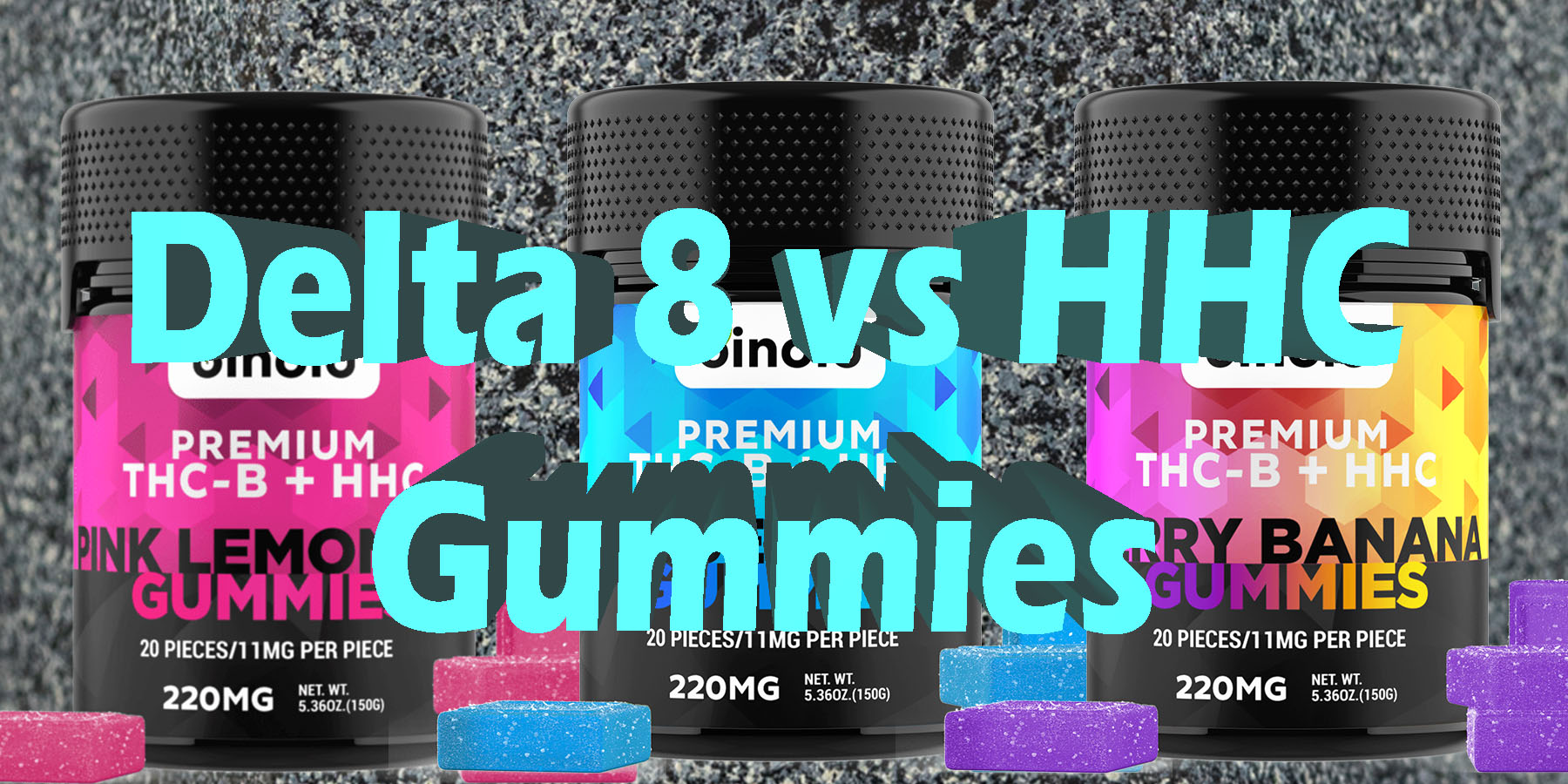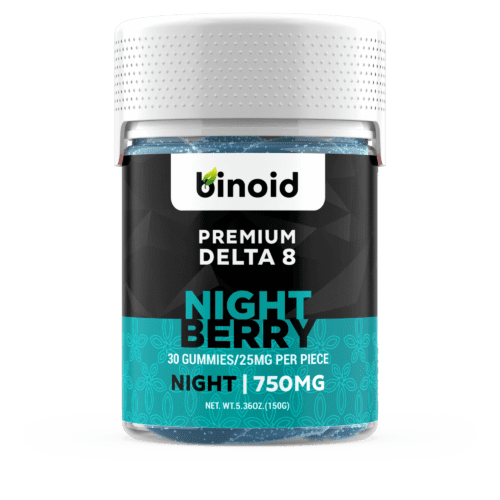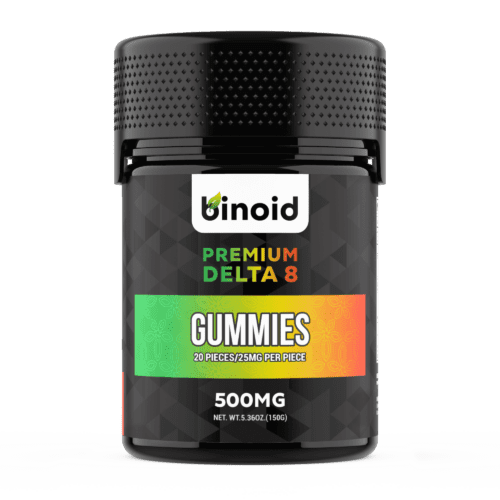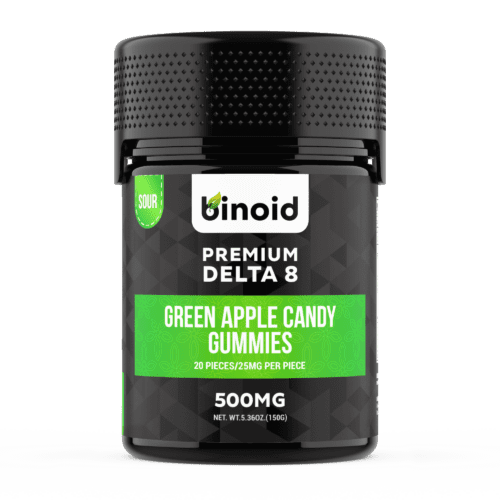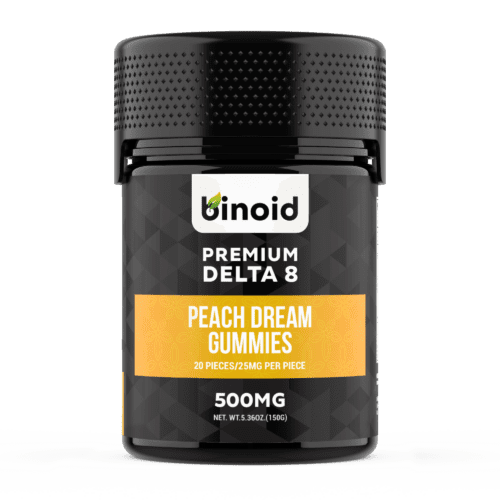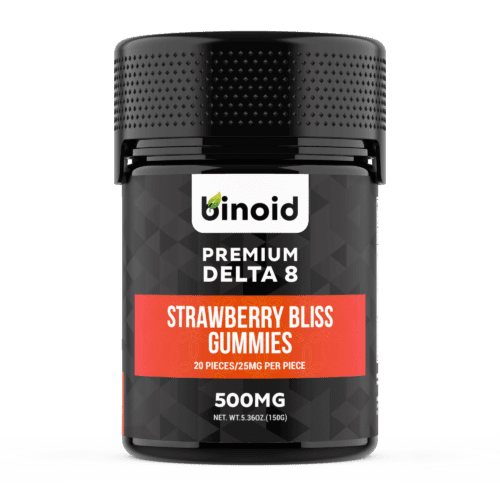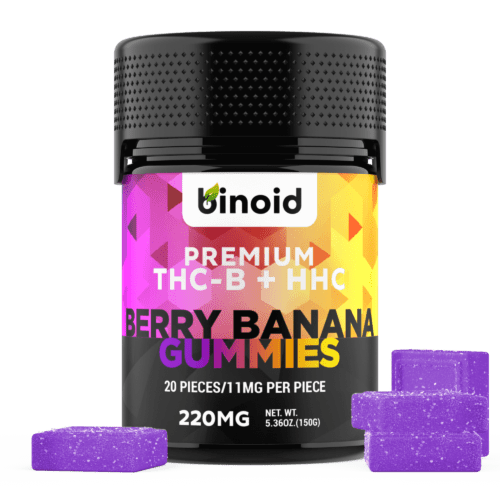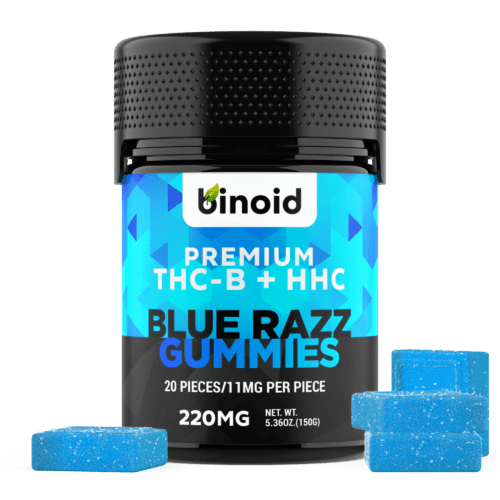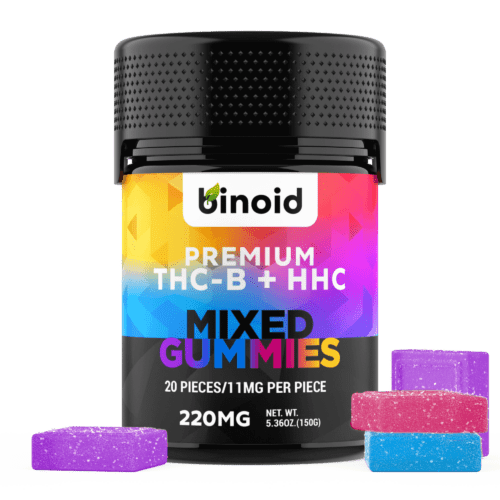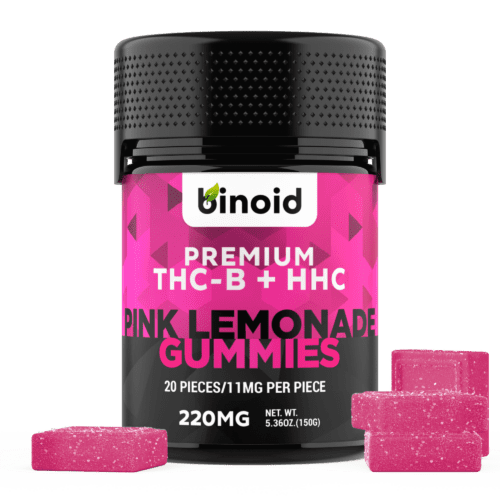The world of botanical exploration is a fascinating tapestry woven with threads of ancient wisdom and cutting-edge scientific discovery, constantly revealing new dimensions of plant-derived compounds that captivate and intrigue. In this dynamic landscape, the hemp plant stands as a testament to nature’s profound complexity, offering a rich bounty of molecules capable of inducing a spectrum of nuanced effects. Among the most popular and approachable methods of engaging with these remarkable compounds are cannabinoid-infused gummies, delectable edibles that transform scientific innovation into a delightful, consumer-friendly experience.
As researchers and innovators delve deeper into the hemp plant’s chemistry, novel compounds continue to emerge, prompting exciting comparisons and sparking a vibrant conversation among enthusiasts. This continuous evolution sets the stage for a compelling matchup, highlighting two distinct yet equally valid approaches to exploring the hemp plant’s potential: a detailed examination of Delta 8 gummies versus HHC gummies.
To Buy Cannabinoid Gummies Click Here
Recommended products
What are Cannabinoids?
To truly appreciate the nuances of modern hemp-derived products and to navigate this exciting marketplace with confidence and informed understanding, one must first journey to the molecular heart of the hemp plant and truly grasp the marvels known as cannabinoids. These are naturally occurring chemical compounds that serve as the primary drivers behind the vast and diverse range of effects that the cannabis plant family, including its non-intoxicating cousin, hemp, can produce. One can conceptualize them as the plant’s own intricate biochemical language, a sophisticated set of chemical messengers that possess the remarkable ability to communicate with the human body in a profoundly specific and interactive way.
To date, scientists have successfully identified over one hundred distinct cannabinoids, each boasting its own unique chemical structure and, as a direct result, its own signature properties and potential effects on human physiology and consciousness. The most famous of these are undoubtedly Tetrahydrocannabinol (THC), celebrated for its euphoric properties, and Cannabidiol (CBD), known for its non-intoxicating, balancing qualities. However, these two are merely the most visible stars in a massive and brilliant constellation of compounds that includes a host of other intriguing players like Cannabigerol (CBG), Cannabinol (CBN), and various forms of THC analogs such as Delta 8 and the intriguing HHC.
The extraordinary mechanism through which cannabinoids interact with us lies within a sophisticated and vital biological network called the endocannabinoid system (ECS). This intricately complex system, which extensive research has confirmed is present in all vertebrates, acts as a master regulator within the body. It is a pervasive and fundamental web of receptors, metabolic enzymes, and internally produced cannabinoids (known as endocannabinoids, such as anandamide, often playfully dubbed the “bliss molecule,” and 2-arachidonoylglycerol or 2-AG) that works tirelessly around the clock to maintain a state of internal equilibrium, a biological concept known as homeostasis.
The ECS plays a crucial role in modulating an incredibly wide array of our most important bodily functions, from mood and memory to appetite, sleep-wake cycles, sensory processing, and even aspects of immune function. The primary communication ports of this vast system are its receptors, most notably Cannabinoid Receptor 1 (CB1) and Cannabinoid Receptor 2 (CB2). CB1 receptors are found in their highest concentrations throughout the brain and central nervous system, while CB2 receptors are more densely populated in the peripheral regions of the body, particularly within the cells and tissues of the immune system. Phytocannabinoids—the cannabinoids derived from plants like hemp—bear a striking structural resemblance to our body’s own endocannabinoids. This similarity allows them to bind to, influence, or otherwise interact with these CB1 and CB2 receptors, much like a specific key is designed to fit into and operate a designated lock, thereby initiating a cascade of effects.
This intricate interaction between a phytocannabinoid molecule and an ECS receptor is precisely what triggers the spectrum of physiological and psychological effects associated with cannabinoid consumption. When a cannabinoid with a strong affinity for the CB1 receptor, such as the various forms of THC or its hydrogenated cousin HHC, directly attaches to and activates these receptors in the brain, it can modulate the release of various neurotransmitters like dopamine and serotonin, leading to the euphoric, blissful, and perception-altering experiences that users often seek. In stark contrast, other cannabinoids, like CBD, have a much more indirect and subtle influence on the system.
CBD does not bind strongly to either the CB1 or CB2 receptor; instead, it is believed to work through a variety of other complex pathways, such as inhibiting the enzyme FAAH, which is responsible for breaking down our natural endocannabinoid anandamide, thereby enhancing our body’s own regulatory capabilities. The specific manner in which each individual cannabinoid interacts with the ECS—the particular receptors it has an affinity for, the strength and efficiency of its binding action, and its complex interplay with the dozens of other compounds found in a full-spectrum extract—is what ultimately defines its unique signature profile. This beautiful and complex biochemical dance between plant-derived compounds and our own innate biological systems forms the fundamental science behind every single cannabinoid-infused product on the market, from the simplest tincture to the most elaborately crafted gummy.
Recommended products
What are Cannabinoid-Infused Gummies and How are They Typically Made?
Cannabinoid-infused gummies represent a significant and remarkably user-friendly evolution in the methods by which people choose to consume and experience the vast array of compounds derived from the versatile hemp plant. They are, at their essence, delicious edible candies that have been skillfully and precisely infused with a verified dose of a specific cannabinoid extract. These products typically begin with a base that is familiar to any candy enthusiast—often utilizing gelatin to achieve that classic, satisfyingly chewy texture, or fruit pectin as a high-quality, vegan-friendly alternative—and are then elevated with a wide spectrum of natural and artificial flavors, vibrant colors, and various sweeteners. The meteoric rise in the popularity of this particular format can be attributed to a powerful and synergistic combination of factors that cater directly to the preferences and lifestyle of the modern consumer.
Gummies offer a level of discretion that is unparalleled by other consumption methods; being visually and aromatically indistinguishable from any other candy. Furthermore, and perhaps most importantly for a consistent experience, they provide exceptional and reliable dosing accuracy. Unlike methods such as inhalation, where the actual intake can be highly variable and difficult to measure, each gummy is manufactured through a meticulous and controlled process to contain a specific milligram amount of cannabinoids. This gives users absolute and unambiguous control over their experience, which is crucial for both novices and experts. This trifecta of convenience, appealing flavor profiles, and dosing precision has made gummies an incredibly approachable and enjoyable entry point for beginners, as well as a reliable and consistent staple for even the most seasoned cannabinoid connoisseurs.
The creation of a high-quality, safe, and effective cannabinoid gummy is a complex, multi-stage industrial process that represents a perfect marriage of culinary artistry and exacting chemical science. It is an intricate journey that demands meticulous attention to detail and the implementation of stringent quality control protocols at every single step to ensure that the final product is not only potent and enjoyable but also certifiably pure, safe, and flawlessly consistent from one gummy to the next, and from one batch to the next. From the careful selection of hemp genetics and the cultivation of the source plant to the final, child-resistant, and hermetically sealed packaging, reputable manufacturers adhere to a strict and transparent production protocol that leaves absolutely nothing to chance.
This fascinating journey from a humble hemp plant to a perfectly crafted, potent gummy is a powerful testament to the incredible advancements in modern agricultural science and extraction technology. Below is a comprehensive, deeply detailed step-by-step look at how these immensely popular edibles are typically brought to life:
Sourcing, Cultivation, and Harvesting of Superior-Grade Hemp: The entire production chain begins with the single most important foundational element: the hemp plant itself. Premium gummy manufacturers understand that a world-class final product can only be made from world-class raw materials. This process starts with the careful selection of superior hemp genetics, choosing specific cultivars that are known to be naturally rich in the desired cannabinoids (like CBD for conversion) and beneficial terpenes. These plants are then grown on licensed and regulated domestic farms, primarily in states like Colorado, Oregon, and Kentucky, which have well-established and sophisticated agricultural programs for hemp. The most reputable brands insist on sourcing hemp that is cultivated using certified organic and sustainable farming practices, which ensures the soil is free from contaminants and that no prohibited chemical pesticides, herbicides, or fungicides are used during the plant’s entire life cycle. Throughout the growing season, the plants are carefully monitored, and upon reaching their peak cannabinoid and terpene expression, they are harvested with care. The flower, or “biomass”—the part of the plant that is richest in these valuable compounds—is then meticulously dried and cured in climate-controlled environments to preserve its delicate chemical profile and prevent the growth of mold or mildew.
Application of State-of-the-Art Cannabinoid Extraction: With the premium, cured hemp flower ready for processing, the next critical stage is to efficiently extract the valuable cannabinoid compounds from the dense plant material. While several different methods exist, the undisputed gold standard in the high-end manufacturing industry is supercritical CO2 extraction. This highly sophisticated and capital-intensive process involves taking carbon dioxide (CO2) and subjecting it to extremely high pressure and very low temperatures. These specific conditions force the CO2 into a “supercritical” state, where it simultaneously exhibits the physical properties of both a liquid and a gas. This supercritical CO2 is then passed through a large chamber containing the ground-up hemp biomass. In this state, it acts as a powerful yet exceptionally clean solvent, efficiently dissolving the lipid-soluble cannabinoids, terpenes, and flavonoids from the plant material without damaging them through excessive heat or leaving behind toxic residues. Once the extraction cycle is complete, the pressure within the system is released, causing the CO2 to instantly revert to its normal gaseous state and evaporate completely and harmlessly, leaving behind a pure, potent, and entirely solvent-free crude cannabinoid oil. While less expensive methods like ethanol or hydrocarbon extraction are also used, they carry a much higher risk of leaving residual solvents if the oil is not properly and extensively purged afterward.
Intensive Purification via Winterization and Multi-Stage Distillation: The crude cannabinoid oil that is obtained from the initial extraction is incredibly potent but still contains a variety of undesirable components from the raw plant matter. These include things like fats, lipids, plant waxes, and chlorophyll, all of which can negatively impact the final product’s flavor, appearance, texture, and long-term stability. To create a cleaner, purer, and more palatable oil that is suitable for infusion into a gourmet edible product, this crude extract must undergo an intensive, multi-phase refinement process. The first step is typically winterization, a process in which the crude oil is mixed with food-grade ethanol and then frozen at sub-zero temperatures for a period of 24-48 hours. The extreme cold causes the unwanted fats, lipids, and waxes to congeal, solidify, and precipitate out of the solution, allowing them to be easily removed through a series of micro-filters. Following winterization, the now cleaner oil proceeds to the distillation stage. Using advanced short-path or wiped-film distillation equipment, the oil is gently heated under a deep vacuum. This precise control of heat and pressure allows individual compounds to be separated based on their unique boiling points and molecular weights. This highly precise step not only purges any remaining impurities but also allows manufacturers to isolate specific cannabinoids (creating a nearly 100% pure “isolate”) or to create a refined, high-potency oil with a broad spectrum of cannabinoids. The end result of this intensive purification is a beautiful, highly refined, transparent, and golden-hued oil known as distillate.
Molecular Conversion and/or Hydrogenation in Advanced Laboratories: This is a highly specialized, additional step conducted in a sophisticated laboratory environment that is often necessary for cannabinoids like Delta 8 and HHC, which exist in such minuscule, often undetectable, quantities naturally in the hemp plant that direct extraction is impractical. For Delta 8, this involves the well-understood isomerization of abundant, hemp-derived CBD, where a precise acid catalyst is used to rearrange the CBD molecule into its isomer, Delta 8 THC. For HHC, the process is called hydrogenation, a scientific technique first developed by chemist Roger Adams in the 1940s. It involves adding hydrogen atoms to the Delta 9 THC molecule (which itself is typically derived from hemp-sourced CBD or THCA), breaking the double bonds in its chemical structure. This creates a new, highly stable compound, HHC. Following these reactions, the resulting cannabinoid oil undergoes another rigorous series of purification and cleansing steps, such as chromatography, to remove any and all residual catalysts or potential byproducts. This ensures the final distillate is pure, safe, and ready for infusion, with its specific cannabinoid profile rigorously verified by third-party lab testing.
Gourmet Formulation and Culinary Preparation of the Gummy Base: Concurrent to the cannabinoid extract being perfected in the laboratory, a separate culinary team prepares the gummy candy base on an industrial scale. This is a large-scale cooking process that requires the precision and consistency of a scientific experiment. For a classic gummy with that familiar firm chew, the recipe typically includes high-quality gelatin, purified water, sweeteners like corn syrup and granulated sugar, and food-grade acids such as citric acid or malic acid for a touch of tartness and flavor enhancement. For the rapidly growing vegan market, animal-derived gelatin is swapped out for fruit pectin, a plant-based gelling agent that creates a slightly softer, cleaner bite. At this stage, premium, often all-natural, flavorings derived from real fruit purees and botanical extracts are carefully selected to create the desired taste profile. Natural colorings, sourced from ingredients like beet juice, spirulina, or turmeric, are also added to give the gummies their vibrant, appealing appearance. All of these ingredients are meticulously measured and combined in massive, steam-jacketed industrial kettles and cooked to an exact temperature and viscosity, known as the Brix, to achieve the perfect, consistent gummy base.
Homogenization and Precision Cannabinoid Infusion: This is arguably the most critical and technically challenging step in the entire manufacturing process for ensuring product consistency and consumer safety. The prepared cannabinoid distillate—whether it be Delta 8, HHC, or a complex blend of multiple cannabinoids—is meticulously measured to a precise potency that is calculated for the entire batch, often down to the microgram. This highly refined, thick oil is then introduced into the hot, liquid gummy mixture within the kettle. It is then subjected to an intensive process of high-shear mixing and industrial-grade homogenization. This vigorous, powerful blending guarantees that the cannabinoid extract is perfectly and evenly distributed throughout every single drop of the gummy slurry, achieving a uniform molecular suspension. Without this essential step, the oil-based cannabinoids could pool together, resulting in “hot spots” where some gummies in the batch could have a dangerously high dose while others have virtually none. Proper homogenization is the absolute key to a predictable, safe, and reliable edible experience.
Product Depositing, Molding, and Atmospheric Curing: Once the cannabinoid-infused gummy mixture is perfectly homogenized and has reached the ideal temperature for depositing, it is transferred from the cooking kettles to a specialized machine called a depositor. This machine operates with extreme precision, dispensing the exact same amount of the liquid gummy solution into vast trays of molds, ensuring each gummy is a uniform weight and size. These food-grade silicone or starch molds can be made in any number of conceivable shapes, from classic gummy bears and worms to sophisticated cubes, domes, rings, or custom brand-specific shapes. After being filled, the trays of molds are carefully transported into large, environmentally controlled curing rooms. Here, the gummies are left to set and cure, typically for a period of 24 to 72 hours, under tightly regulated conditions of temperature and humidity. This curing process is vital for several reasons: it allows the gelatin or pectin to fully set and cross-link, which develops the final desired texture and chewiness of the gummy, and it allows for a controlled amount of excess moisture to evaporate, which is absolutely crucial for ensuring the product’s long-term shelf stability and preventing microbial growth.
Final Finishing Touches and Optional Product Coating: After the gummies have fully cured and solidified, they are de-molded from their trays, often by mechanical means. At this point, they may go through a final finishing step to enhance their flavor, texture, and appearance, as well as their handling. This often involves placing the gummies into a large, rotating drum or “tumbler” where a specific coating is applied. For a classic sweet gummy, this might be a light coating of fine sugar crystals or a non-stick carnauba wax polish. For the ever-popular sour varieties, a specialized mixture of sugar and a souring agent like citric acid or malic acid is used to provide that signature tangy, mouth-puckering kick. This coating not only adds an extra dimension of flavor and sensory experience but also serves the very practical purpose of helping to prevent the individual gummies from sticking together in the final packaging.
Mandatory, Full-Panel Third-Party Laboratory Testing: Before a single gummy from a completed batch is ever packaged for sale, a reputable and transparent brand will send representative samples to an independent, ISO 17025-accredited, third-party laboratory for a comprehensive battery of analytical tests. This is the most crucial, non-negotiable step for guaranteeing consumer safety, product legitimacy, and brand integrity. The lab performs a series of tests to verify several key metrics. The cannabinoid potency test confirms the exact milligram amount of Delta 8, HHC, and any other cannabinoids present in the product, ensuring the product is accurately labeled and legally compliant. The full panel safety analysis screens for a wide range of potential contaminants, including any residual solvents left over from extraction or synthesis, heavy metals (like lead, arsenic, and mercury) that may have been absorbed from the soil, dozens of specific pesticides, and microbial contaminants like mold, yeast, E. coli, and salmonella. The resulting multi-page report is called a Certificate of Analysis (COA), and it must be made easily accessible to all consumers.
Secure, Compliant, and Informative Packaging and Labeling: The final step in this intricate and carefully controlled process is to package the fully tested and approved gummies into their final retail containers. To protect the integrity, freshness, and potency of the product, the packaging must be both hermetically sealed and opaque to shield the gummies from degradation due to exposure to oxygen and UV light. In most jurisdictions, the packaging is also legally required to be certified as child-resistant. The product’s label must be clear, accurate, and fully compliant with all applicable state and federal regulations. A compliant label should clearly state the type and amount of active cannabinoid per gummy and per package, a full list of all ingredients and potential allergens, detailed nutritional information, suggested usage instructions and stern warnings, manufacturing and expiration dates, and, critically, a specific batch number and a scannable QR code that links directly to the third-party lab test results (the COA) for that exact batch, ensuring the ultimate level of consumer transparency and trust.
Recommended products
Breaking Down Today’s Cannabinoid Gummies Matchup: Delta 8 Gummies vs. HHC Gummies
With a firm and deeply detailed understanding of the core science that governs cannabinoids and the meticulous, multi-stage industrial process required to craft a premium infused gummy, we can now turn our undivided attention to the main event. This is a truly fascinating tale of two distinct molecular states, a matchup that pits a familiar, semi-euphoric isomer against a hydrogenated, highly stable analog. In one corner of the ring, we have the celebrated and widely adopted favorite, Delta 8 THC, a cannabinoid that has earned its immense popularity for its characteristically clear-headed, functional, and enjoyably mild effects.
In the opposing corner stands the intriguing contender, HHC, a compound that, despite its more recent emergence, has quickly garnered a reputation for delivering a uniquely balanced yet potent euphoria, often described as a clear and uplifting experience. Their compelling matchup is not about determining a simple winner, but about deeply understanding the fundamental differences in their inherent properties, their resulting effects, and their distinct use cases, empowering you to make a safe and informed decision tailored to your desired experience.
Contender #1: Delta 8 Gummies
Delta 8 gummies have rapidly and decisively carved out a significant and loyal niche within the expansive hemp marketplace, becoming the go-to choice for a diverse and growing range of consumers who are seeking a very particular kind of cannabinoid experience. They are often framed and rightfully celebrated as the ideal intermediate step—a gentle, welcoming introduction for those who are curious about the world of THC but are perhaps wary of the renowned intensity that can sometimes be associated with traditional cannabis products.
These popular gummies are widely celebrated for their unique ability to provide a tangible sense of blissful elevation and serene relaxation, all without the heavy cognitive fog or potential for over-stimulation that can sometimes accompany more potent cannabinoids. This highly sought-after profile of effects has made them an incredibly popular choice for enhancing social gatherings, sparking creative endeavors, or simply unwinding at the end of a long, demanding day. They offer a sophisticated way to elevate the moment while maintaining a comfortable and desirable level of presence and mental clarity.
At its most fundamental level, Delta 8 THC, or its full scientific name Δ8-tetrahydrocannabinol, is an analog, or a close chemical relative, of the more famous Delta 9 THC; with only structural difference between these two molecules is the specific location of a crucial double bond within their carbon chain structure. For Delta 8, this bond is located on the eighth carbon chain, while for Delta 9, it is found on the ninth. This seemingly minor and subtle shift in molecular geometry has a profound and direct impact on how the molecule interacts with the body’s CB1 receptors, which are highly concentrated in the brain and central nervous system. Scientific research suggests that Delta 8 binds to the CB1 receptor, but it does so with a lower affinity or binding efficiency when compared to its more powerful cousin, Delta 9.
This weaker and less efficient bond is widely believed to be the primary reason for its noticeably less potent psychoactive effects. While Delta 8 is indeed a naturally occurring cannabinoid in both cannabis and hemp, it is only found in vanishingly small, trace amounts, making direct extraction and isolation completely impractical for commercial production. Therefore, the Delta 8 THC used in nearly all gummies on the market is produced through the laboratory process of isomerization, which safely and efficiently converts abundant, hemp-derived CBD into Delta 8 THC.
The consumer world of Delta 8 gummies is anything but monotonous; it is a vibrant and dynamic marketplace offering a truly dazzling array of options that are designed to cater to virtually every palate, preference, and desired experience. This incredible variety is a direct result of a competitive industry pushing the boundaries of innovation, allowing consumers to tailor their cannabinoid journey with an unprecedented level of precision and personalization. A closer inspection of the market reveals the incredible diversity that is readily available to today’s discerning consumer:
Shapes & Sizes: The sheer creativity on display in the gummy market knows virtually no bounds. Delta 8 gummies are available in a vast and playful assortment of forms, ranging from the timeless and nostalgic gummy bears, worms, and rings to more sophisticated and adult-oriented cubes, domes, and fruit slices. Many brands also frequently release unique, custom shapes that are tied to their specific branding or to seasonal themes, adding an element of fun and collectibility. The physical size of the gummy often, though not always, correlates with its cannabinoid potency. Smaller, bite-sized gummies might contain a manageable microdose of 5mg to 10mg, making them perfect for beginners. In contrast, larger gummies, sometimes called “power-sized,” could pack a formidable 50mg or even 100mg of Delta 8, providing a potent option for experienced users or those with higher tolerances. This variety is not merely aesthetic; it plays a crucial role in allowing for easier and more precise dose management and contributes to a more enjoyable overall consumption experience.
Flavors: The flavor profiles available for Delta 8 gummies are a veritable playground for the senses, designed to delight the palate and mask the natural earthiness of the hemp extract. The options span the entire fruit spectrum, including beloved single-note classics like Strawberry, Blue Raspberry, Watermelon, Green Apple, and Mango. Beyond these staples, one can find more exotic and complex gourmet blends such as Strawberry-Kiwi, Peach-Pear, Pineapple-Coconut, or a vibrant Tropical Medley. Many premium brands place a strong emphasis on using all-natural flavorings derived from real fruit purees and botanical extracts, consciously avoiding the artificial and chemical-like taste that can often be found in lower-quality, mass-produced products. The flavor is a critical component of the overall experience, successfully transforming the simple act of taking a dose into a genuinely delightful and indulgent treat.
Potential Use of Live Resin or Live Rosin: For consumers seeking a more authentic, nuanced, and robust hemp experience, a growing number of premium Delta 8 gummies are now being infused with either live resin or live rosin. These are highly sought-after, full-spectrum concentrates that are produced from fresh hemp plants that have been flash-frozen at the very moment of harvest, often right in the field. This cryogenic freezing process is crucial because it perfectly preserves the full spectrum of volatile terpenes, flavonoids, and other delicate plant compounds that are typically lost during the traditional weeks-long drying and curing process. Live resin is subsequently extracted using a light hydrocarbon solvent, while live rosin utilizes a completely solventless method of just heat and pressure. Infusing this terpene-rich, full-spectrum extract into a gummy alongside the Delta 8 distillate can lead to a more flavorful, aromatic, and potent experience due to the “entourage effect,” the theory that all the plant’s compounds work together synergistically to enhance and modulate one another’s effects.
Occasionally Strain-Infused: Taking the concept of tailored effects one step further, many Delta 8 gummies are infused with botanical terpene blends that are formulated to precisely mimic the aromatic and effectual profiles of famous cannabis strains. Terpenes are the aromatic compounds responsible for the distinct scent and flavor of virtually all plants, from the limonene in lemons to the pinene in pine trees. In hemp, they also play a significant role in modulating the effects of cannabinoids. By adding a specific terpene profile from a well-known Sativa strain like Sour Diesel or Jack Herer, a gummy might be geared towards promoting a more uplifting, energetic, and cerebrally-focused experience. Conversely, using the terpene blend from a classic Indica strain like Granddaddy Purple or Northern Lights could create a gummy designed to encourage deep physical relaxation and tranquility. Hybrid strain profiles, such as those from Blue Dream or OG Kush, aim to provide a more balanced effect between mind and body.
Sometimes Combined with Functional Ingredients: In an effort to create a more targeted and holistic product, some innovative brands are enhancing their Delta 8 gummy formulations with other functional, non-cannabinoid ingredients that are known for their supportive properties. For instance, a gummy marketed for “Sleep” might be co-infused with a precise dose of Melatonin, the hormone our body naturally produces to regulate the sleep-wake cycle, or botanicals like chamomile and valerian root. A “Focus” or “Energy” blend could include ingredients like L-Theanine, an amino acid found in green tea known for promoting a state of calm alertness, or even B-vitamins. These additions are not intended to make health claims but aim to complement the inherent effects of Delta 8 THC, offering a more purpose-driven and synergistic edible experience for the user.
Sometimes Combined with Other Cannabinoids: Perhaps the most exciting and innovative frontier in the modern gummy market is the deliberate creation of complex and sophisticated cannabinoid blends. Forward-thinking manufacturers are moving well beyond simple single-cannabinoid formulations to craft intricate cannabinoid cocktails designed to produce highly specific and unique effects. These increasingly popular blends can be broadly categorized by the general potency of the cannabinoids being added to the Delta 8 base:
Non-Intoxicating Cannabinoids: Combining Delta 8 with non-psychoactive cannabinoids like CBD, CBG, or CBN is an extremely common practice designed to create balance. CBD (Cannabidiol) is widely known for its calming and balancing properties and can effectively temper the psychoactive “edge” of THC for a smoother experience. CBG (Cannabigerol), often called the “mother of all cannabinoids,” is frequently associated with a clear-headed, focused feeling. CBN (Cannabinol) is a cannabinoid that forms as THC ages and has developed a strong reputation for its very relaxing and sedative-like qualities, making a Delta 8 + CBN gummy an incredibly popular choice for nighttime use.
Mild Potency Cannabinoids: For those seeking a slightly different psychoactive flavor or a more energetic profile, Delta 8 might be paired with other cannabinoids known for their milder effects. Delta 10 THC is often described by users as being more energizing and cerebrally stimulating, akin to a Sativa strain. THCV (Tetrahydrocannabivarin) is a unique cannabinoid known for its clear-headed, stimulating qualities and, in some studies, its potential to suppress appetite. THCM is a more recently discovered cannabinoid whose effects are still being explored.
Moderate Potency Cannabinoids: To create a product that effectively bridges the potency gap or introduces a different dimension to the experience, some Delta 8 blends incorporate other moderately potent cannabinoids. This can include compounds like THCA, which converts to Delta 9 upon heating, or Delta 11 THC, which is thought to be more potent than Delta 9 when metabolized. These additions aim to either modify the psychoactive intensity or introduce unique qualities to the experience.
Strong Potency Cannabinoids: This is a very common practice. To create a more powerful experience without reaching the intensity of a pure, highly potent product, many blends fortify a Delta 8 base with stronger cannabinoids. This can include powerhouse molecules like THC-P, THC-JD, HHC, THC-B, or THC-H. This creates a “Delta 8 on steroids” effect, significantly enhancing the potency and duration, catering to those with higher tolerances.
Recommended products
The overall effects experienced from consuming a Delta 8 gummy are a direct and tangible result of its specific formulation, creating a vast and nuanced spectrum of potential experiences for the user. A standard, unadulterated gummy containing only pure Delta 8 THC distillate typically delivers a smooth, manageable, and wonderfully lucid ‘high’. Users frequently report feeling pleasantly relaxed, significantly uplifted in mood, and gently euphoric, but crucially, without the intense cerebral rush, potential for time dilation, or risk of paranoia that can sometimes accompany more potent cannabinoids. It is often described as a functional, clear-headed buzz that allows for easy engagement in social activities, creative work, or outdoor adventures.
When this base experience is enhanced with the inclusion of full-spectrum live resin, the journey becomes richer, deeper, and more dimensional, with the preserved terpenes providing a more authentic “full-plant” feel and flavor. Strain-infused gummies skillfully guide this lucid high in a specific direction—upward toward energetic stimulation with Sativa profiles, or downward toward deep, full-body calm with Indica profiles. The addition of functional ingredients like Melatonin or L-Theanine further fine-tunes the experience for a particular purpose, while the inclusion of other cannabinoids opens up a whole new universe of possibilities, from the supremely balanced and gentle feel of a D8:CBD blend to the profoundly potent and long-lasting journey offered by a gummy expertly fortified with a powerhouse cannabinoid.
Pros & Cons
When thoroughly evaluating Delta 8 gummies as a potential choice for your cannabinoid journey, it is immensely beneficial to carefully weigh their distinct and compelling advantages against their potential drawbacks and the realities of the current market. This balanced and honest perspective is crucial for making a well-informed decision that aligns perfectly with your individual needs, tolerance, location, and circumstances.
Pros:
Milder and More Manageable Psychoactive Experience: The most frequently cited and appreciated benefit of Delta 8 is its characteristically gentler high. For individuals who are new to the world of THC or for those who know they have a low tolerance, Delta 8 provides a less intimidating and more approachable introduction, offering a tangible state of relaxation and bliss with a significantly lower risk of feeling overwhelmed or uncomfortable.
Enhanced Mental Clarity and Focus: A large number of users consistently report that Delta 8 allows them to maintain a greater degree of mental clarity and cognitive function when compared to more potent cannabinoids. This widely described “clear-headed high” can make it a more suitable and functional option for daytime use, creative pursuits, or social situations where one wishes to remain sharp, witty, and fully engaged in conversation.
Favorable Federal Legal Status (Under the 2018 Farm Bill): According to the 2018 Agriculture Improvement Act (the Farm Bill), hemp and all of its derivatives that contain less than 0.3% Delta 9 THC by dry weight are considered federally legal. Since the Delta 8 on the market is derived from federally compliant hemp, it falls under this legal protection, making it legally accessible for purchase in many states, particularly through online retailers that ship nationwide.
Wider Accessibility in Certain Regions: Stemming directly from its specific federal legal status, Delta 8 products can often be legally shipped to and purchased in many states where recreational or even medical cannabis remains illegal. This has made cannabinoid experiences legally accessible to a much broader segment of the American population who would otherwise have no options.
Vast Product Diversity and Innovation: The fiercely competitive and rapidly growing Delta 8 market has spurred an incredible wave of innovation among manufacturers. As a result, consumers can now find an almost overwhelming variety of potencies, flavors, unique cannabinoid blends, and highly specialized formulations, allowing for a deeply personalized and tailored experience.
Lower Incidence of Unwanted Anxious Feelings: Due to its reduced potency and different interaction with the CB1 receptor, many users find that Delta 8 is significantly less likely to induce feelings of anxiety, paranoia, or general unease, which can sometimes be unwelcome side effects of consuming higher doses of more powerful cannabinoids.
Inherently Convenient and Precise Dosing: Like all well-made Delta 8 gummies, the format itself allows for very simple, repeatable, and highly accurate dosing. This completely removes the guesswork inherent in other consumption methods and allows users to carefully control, understand, and document their level of consumption for consistent results.
Completely Discreet Method of Consumption: Gummies offer a perfectly odorless and visually inconspicuous way to enjoy cannabinoids, making them an incredibly convenient and worry-free choice for a wide range of settings, lifestyles, and situations where discretion is valued.
Recommended products
Cons:
Complex, Contradictory, and Shifting Legality: While Delta 8 is federally legal under the Farm Bill, its status is highly contentious and unstable at the state level. Numerous state legislatures and regulatory bodies have moved to specifically ban or heavily restrict its sale, creating a confusing, inconsistent, and constantly changing patchwork of laws across the country. It is absolutely crucial for consumers to verify the current laws in their specific state and locality.
Pervasive Lack of Federal Regulation and Oversight: The market for Delta 8 currently operates in a largely unregulated federal space. This “Wild West” environment means that product quality, safety, and labeling accuracy can vary dramatically between different brands. Without FDA oversight, consumers must be extremely diligent in vetting brands and insisting on comprehensive, third-party lab tests to avoid potentially impure, unsafe, or inaccurately labeled products.
Potential Concerns Over Conversion Byproducts: Since the vast majority of Delta 8 is created through a chemical conversion process from CBD, there is a theoretical potential for residual chemicals, unreacted acids, or unknown byproducts to remain in the final product if the process is not performed by skilled chemists and followed by rigorous, multi-stage purification and testing.
Will Still Result in a Positive Drug Test: Despite its milder effects and different legal status in some areas, Delta 8 THC is structurally very similar to Delta 9 THC. It will be metabolized by the body into compounds that are often indistinguishable from Delta 9 metabolites on a standard drug test, leading to a positive result for THC.
Recommended products
Contender #2: HHC Gummies
Now, we shift our focus to an intriguing and relatively newer contender in the cannabinoid arena: HHC gummies. HHC represents a fascinating advancement in the world of hemp-derived compounds, offering a unique profile of effects that many users describe as a balanced and clear-headed euphoria. HHC has garnered significant attention for its enhanced stability and its distinct psychoactive experience, which is often likened to a smoother, less intense version of Delta 9 THC but with a notable uplift.
These gummies are designed for individuals seeking a powerful yet manageable experience, positioning them as an excellent alternative for those who find Delta 8 too mild but wish to avoid the sometimes overwhelming intensity of more potent cannabinoids. HHC gummies signify a sophisticated step forward in personalizing cannabinoid enjoyment.
At its core, Hexahydrocannabinol (HHC) is a hydrogenated derivative of THC, meaning that HHC is essentially a THC molecule that has undergone a process called hydrogenation, where hydrogen atoms are added to its chemical structure, specifically breaking the double bonds present in the naturally occurring Delta 9 THC molecule. This chemical modification, first achieved by chemist Roger Adams in 1944, gives HHC a significantly longer shelf life and increased resistance to degradation from heat and UV light, making it a remarkably stable cannabinoid.
While HHC occurs naturally in cannabis pollen and seeds in very minute quantities, the HHC found in commercial products is almost exclusively produced in a laboratory setting. Typically, Delta 9 THC (which itself is often synthesized from hemp-derived CBD or THCA to remain federally compliant) serves as the precursor, undergoing a catalytic hydrogenation process in a specialized reactor to yield HHC. This process produces two main stereoisomers: (9R)-HHC and (9S)-HHC. It is generally understood that the (9R)-HHC isomer binds more effectively to the CB1 receptors in the endocannabinoid system, leading to the euphoric effects.
The market for HHC gummies has rapidly diversified, offering a wide array of choices that cater to various preferences while capitalizing on HHC’s unique properties. This expansion reflects HHC’s growing popularity and the industry’s continuous innovation in delivering tailored cannabinoid experiences:
Shapes & Sizes: HHC gummies are available in a broad spectrum of appealing shapes and sizes, from classic fruit-inspired designs and gummy bears to more contemporary cubes and custom brand molds. The potency per gummy is a crucial aspect, and manufacturers generally offer a range to accommodate different user tolerances. For individuals new to HHC or those with a lower tolerance, smaller gummies containing doses of 5mg to 15mg are common. More experienced users, however, can find higher potency options ranging from 25mg to 50mg per gummy. This variety allows for more precise control over the dosage, which is particularly important given HHC’s potency and its distinct effects.
Flavors: The flavor profiles for HHC gummies are as diverse and enticing as those found in any premium edible market. Popular options often include a vibrant selection of fruit flavors such as luscious Strawberry, tangy Blue Raspberry, juicy Watermelon, and exotic Mango. Beyond these single-note classics, many brands also craft more intricate and sophisticated blends like Tropical Punch, Berry Medley, or Citrus Burst. Reputable manufacturers frequently prioritize the use of natural and high-quality flavorings, often derived from real fruit extracts, to ensure a delightful and authentic taste experience. The goal is to make the consumption of HHC gummies an enjoyable and palatable treat that effectively masks any subtle earthiness from the cannabinoid extract.
Potential Use of Live Resin or Live Rosin: For connoisseurs seeking an elevated and more holistic experience, HHC gummies infused with live resin or live rosin are gaining traction. These full-spectrum concentrates are derived from fresh, flash-frozen hemp plants, a process that meticulously preserves the plant’s volatile terpenes, flavonoids, and minor cannabinoids that would otherwise be lost during traditional drying and curing. When combined with HHC distillate, the rich terpene profile from live resin or rosin contributes to a robust “entourage effect.” This synergy can potentially modulate and enhance the overall euphoric experience, making it more nuanced, flavorful, and profoundly engaging, mimicking the complex effects of the whole plant.
Occasionally Strain-Infused: To further tailor the HHC experience, some gummies are infused with botanical terpene blends that are carefully formulated to mimic the aromatic and effectual profiles of renowned cannabis strains. For instance, an HHC gummy incorporating a Sativa-dominant terpene profile, like those found in strains such as Jack Herer or Sour Diesel, might aim to promote a more uplifting, energetic, and cerebrally stimulating experience. Conversely, infusing with an Indica-like terpene blend, such as those from Granddaddy Purple or Northern Lights, could steer the HHC effects towards a deeper physical relaxation and tranquility. Hybrid strain profiles, like Blue Dream, seek to offer a more balanced experience between mind and body.
Sometimes Combined with Functional Ingredients: In an effort to create more purpose-driven products, some innovative brands are enhancing their HHC gummy formulations with other functional ingredients known for their supportive properties. For example, an HHC gummy designed for nighttime use might be co-infused with precise amounts of Melatonin, a hormone that assists with sleep regulation, or calming botanical extracts like chamomile or valerian root. Conversely, a gummy targeted for daytime use or focus could incorporate ingredients like L-Theanine, an amino acid found in green tea known to promote calm alertness, or various B-vitamins. These additions aim to complement the inherent effects of HHC, offering a more synergistic and tailored experience without making explicit health claims.
Sometimes Combined with Other Cannabinoids: The versatility of HHC makes it an excellent candidate for cannabinoid blending, allowing manufacturers to create complex formulations that fine-tune the overall experience. These sophisticated blends cater to a diverse range of preferences and desired intensities:
Non-Intoxicating Cannabinoids: HHC is frequently combined with non-psychoactive cannabinoids such as CBD, CBG, or CBN. The addition of CBD (Cannabidiol) is particularly common, as it is known for its ability to temper the psychoactive intensity of THC-like compounds, potentially resulting in a smoother, more balanced, and less overwhelming euphoric experience. CBG (Cannabigerol) might contribute to a clear-headed feeling, while CBN (Cannabinol) is often included in nighttime blends due to its reputation for inducing profound relaxation and promoting a tranquil state.
Mild Potency Cannabinoids: While less common, HHC might occasionally be blended with milder psychoactive cannabinoids like Delta 10 THC or THCV. Delta 10 is often associated with more energetic and cerebrally stimulating effects, which could add a unique layer to the HHC experience. THCV (Tetrahydrocannabivarin) is known for its clear-headed and stimulating qualities. These blends aim to slightly modulate the HHC experience towards a more particular energy or focus.
Moderate Potency Cannabinoids: HHC gummies are very frequently blended with other moderately potent cannabinoids, most notably Delta 8 THC. This creates a popular and effective “boosted” product where the mild euphoria of Delta 8 is amplified by the stronger, yet still clear-headed, effects of HHC. It can also be combined with Delta 9 THC itself, creating a multi-faceted and robust psychoactive experience.
Strong Potency Cannabinoids: For consumers with exceptionally high tolerances who are seeking the most potent experiences available, HHC can be found in blends with extremely powerful cannabinoids such as THC-P, THC-JD, THC-B, or THC-H. In these formulations, HHC acts as a significant contributor to a profoundly intense and long-lasting euphoric effect, pushing the boundaries of what is available in the hemp market. These “super blends” are intended only for the most experienced users.
Recommended products
The overall effects of an HHC gummy are consistently reported as being quite potent, often lying somewhere between the milder euphoria of Delta 8 THC and the more intense experience of traditional Delta 9 THC. Users frequently describe HHC as providing a remarkably clear-headed, uplifting, and functional high, distinguishing it from the sometimes heavier, more sedating effects of other cannabinoids. It tends to induce a strong sense of blissful relaxation and elevated mood without typically leading to significant mental fog or paranoia, making it a favorite for social situations or creative pursuits.
When HHC gummies are infused with full-spectrum live resin, the experience can become even richer and more nuanced, with the added terpenes contributing to a more complex and authentic “whole plant” feel. Strain-infused HHC gummies can subtly guide this clear high towards either energizing invigoration with Sativa-like profiles or deep, serene calmness with Indica-like blends. When HHC is expertly combined with other cannabinoids, particularly CBD, it creates a wonderfully robust and layered euphoric journey, amplifying the initial effects and delivering a truly comprehensive and satisfying experience.
Pros & Cons
When thoroughly evaluating HHC gummies as a potential choice for your cannabinoid journey, it is immensely beneficial to carefully weigh their distinct and compelling advantages against their potential drawbacks and the realities of the current market. This balanced and honest perspective is crucial for making a well-informed decision that aligns perfectly with your individual needs, tolerance, location, and circumstances.
Pros:
Potent yet Clear-Headed Euphoria: Many users report that HHC offers a unique balance of potency and mental clarity, often described as being nearly as potent as Delta 9 THC but with less of the “heavy” or mentally foggy feeling. This makes it ideal for those seeking a strong sense of bliss and uplift while maintaining focus and engagement.
Enhanced Stability and Shelf Life: HHC’s hydrogenated molecular structure makes it exceptionally stable. It is more resistant to degradation from UV light and heat compared to traditional THC, which means HHC gummies tend to have a longer shelf life and maintain their potency more effectively over time, reducing concerns about product degradation.
Favorable Federal Legal Status (Under the 2018 Farm Bill): Because HHC is derived from federally compliant hemp and is not Delta 9 THC, it currently falls under the legal protections of the 2018 Farm Bill in many jurisdictions. This makes it legally accessible for purchase and consumption in a broader range of states than traditional cannabis products.
Potency Lies Between Delta 8 and Delta 9: HHC fills a valuable niche for consumers. It’s an excellent option for those who find Delta 8’s effects too mild but consider Delta 9 to be too intense or overwhelming. HHC provides a satisfying middle-ground, offering a substantial but often more manageable euphoria.
Less Likely to Trigger Positive Drug Tests (Anecdotal): While not guaranteed and not a recommendation to circumvent drug tests, anecdotal reports suggest that HHC may be less likely than other THC forms to metabolize into the specific compounds that standard 12-panel drug tests detect. However, this is not scientifically conclusive and should not be relied upon if drug testing is a concern.
Versatile in Blends for Customized Experiences: HHC blends exceptionally well with other cannabinoids, both mild and potent. This versatility allows manufacturers to create highly customized gummies that cater to specific desired effects, from balanced euphoria with CBD to intensely powerful experiences with other strong cannabinoids.
Consistent and Precise Dosing in Gummy Format: As an edible, HHC gummies provide the inherent benefits of accurate, pre-measured dosing, eliminating guesswork. This allows users to reliably replicate their desired experience and manage their intake with confidence, contributing to a more predictable journey.
Discreet and Convenient Consumption: HHC gummies offer a perfectly odorless and visually inconspicuous way to enjoy cannabinoids. They can be consumed discreetly in various settings without drawing attention, making them a practical and user-friendly option for those who value privacy.
Cons:
Limited Long-Term Research and Safety Data: Despite its historical discovery, the commercial availability of HHC is relatively recent. Consequently, there is a significant lack of long-term scientific research on its effects, its full safety profile, its potential interactions with medications, and its impact on human health. Users are, to some extent, exploring uncharted territory.
Variable Potency Due to Stereoisomers: HHC exists as two primary stereoisomers, (9R)-HHC and (9S)-HHC. The (9R)-HHC isomer is considered the more psychoactive one. The ratio of these two isomers can vary in manufactured HHC products, leading to inconsistent potency between different brands or even different batches from the same brand. A product with a higher percentage of (9R)-HHC will be noticeably more potent.
Complex and Shifting Legal Landscape: While federally compliant due to its hemp derivation and non-Delta 9 status, HHC exists in a legal gray area that is subject to change. As with other novel cannabinoids, state and federal lawmakers may introduce legislation to specifically regulate or ban HHC, leading to potential restrictions or legal challenges in various jurisdictions without prior warning.
Requires More Specialized Manufacturing Processes: The production of HHC involves a hydrogenation process that requires specialized equipment, expertise, and strict safety protocols to ensure the final product is pure and free from residual catalysts or byproducts. This complex manufacturing process means consumers must be exceptionally diligent in choosing brands that prioritize rigorous testing and quality control.
Recommended products
Other Key Things You Should Know About When Choosing Either Delta 8 Gummies or HHC Gummies
Navigating the vibrant and ever-evolving landscape of hemp-derived cannabinoids requires an informed approach, especially when comparing compounds like Delta 8 and HHC. This matchup highlights the diversity available, from a gentle, clear-headed euphoria to a more potent, yet still functional, uplift. To ensure a consistently positive, safe, and truly rewarding experience, it is paramount for the consumer to engage in thorough due diligence, embrace personal research, and maintain a clear understanding of their own body and desired effects. In this dynamic market, empowered decision-making is key, especially by knowing the following:
Hemp Source, Cultivation, and Contaminant Screening: The fundamental integrity of any cannabinoid gummy, regardless of whether it contains Delta 8 or HHC, is intrinsically linked to the quality and origin of the hemp plant from which it is derived. Hemp, being a bioaccumulator, can readily absorb various substances from its growth environment. This means that if the soil contains heavy metals like lead or mercury, or if prohibited pesticides and herbicides are used during cultivation, these harmful compounds can be concentrated in the plant and subsequently in the final extract. Therefore, it is absolutely non-negotiable to select brands that are completely transparent about their hemp sourcing. Look for companies that exclusively use domestically grown hemp from licensed farms (such as those in Colorado, Oregon, or Kentucky) which adhere to strict organic and sustainable farming practices. Brands should provide verifiable proof of third-party testing for heavy metals, pesticides, and microbial contaminants in their raw hemp material, ensuring a clean and safe foundation for their products.
Comprehensive, Batch-Specific Third-Party Lab Testing (COAs): This is the single most critical and non-negotiable step for verifying the safety, purity, and precise potency of any cannabinoid edible, especially when dealing with chemically modified compounds like Delta 8 and HHC. Always demand easily accessible, batch-specific Certificate of Analysis (COA) from an independent, ISO 17025-accredited third-party laboratory. For Delta 8, the COA will confirm the exact milligram content and demonstrate compliance with federal law (less than 0.3% Delta 9 THC). For HHC, the COA is crucial to verify the total HHC content, and ideally, the ratio of its two stereoisomers ((9R)-HHC and (9S)-HHC), as the (9R)-HHC is considered the more psychoactive form. Critically, a comprehensive COA for both types of gummies must include a full panel safety analysis, screening for residual solvents (especially important for synthesized cannabinoids), heavy metals, pesticides, and microbial contaminants. Learning to read and interpret these reports is your best defense against mislabeled, impure, or unsafe products.
Understanding Potency Differences and “Start Low, Go Slow”: The potency gap between Delta 8 and HHC is significant and demands respect. Delta 8 offers a milder, more manageable euphoria, typically starting with a dose of 5-10mg for beginners. HHC, on the other hand, is generally considered to be more potent than Delta 8, with effects often described as being closer to Delta 9 THC, but with a clearer headspace. Therefore, for HHC, even experienced users should begin with a very small dose, perhaps 5mg, or even less if available, and adhere strictly to the “start low, go slow” mantra. Always wait at least 2 full hours after consuming an edible to gauge its full effects before considering taking more. This patience is crucial for preventing an overwhelming or uncomfortable experience, particularly with the more potent HHC.
Metabolism, Onset Time, and Duration of Effects: Edibles, by their nature, have a delayed onset because they must be digested and metabolized by the liver before the cannabinoids enter the bloodstream. For both Delta 8 and HHC gummies, expect effects to begin anywhere from 30 minutes to over 2 hours after consumption. Once they kick in, the effects can last for a prolonged period, typically 4 to 8 hours, and sometimes even longer depending on the dose, individual metabolism, and the presence of other cannabinoids or terpenes. It is imperative to plan your consumption carefully, ensuring you are in a safe, familiar, and comfortable environment without any immediate responsibilities that require your full attention, such as driving, operating machinery, or complex decision-making.
Distinguishing Between Full Spectrum, Broad Spectrum, and Isolate: The type of cannabinoid extract used in your gummy can profoundly influence the overall experience. Full-spectrum products contain a wide array of cannabinoids, terpenes, and other beneficial plant compounds from the hemp plant, with Delta 9 THC levels below 0.3%. The theory behind full spectrum is the “entourage effect,” where these compounds work synergistically to enhance and modulate each other’s effects, potentially leading to a richer and more nuanced experience. Broad-spectrum extracts are similar but have had all detectable Delta 9 THC removed. Isolates are pure, single cannabinoids. While Delta 8 is often found in isolate or distillate form, HHC is also commonly found as a distillate, but both can be enhanced with full-spectrum terpenes or other cannabinoids to mimic a more holistic experience. Consider your preference: a focused, singular cannabinoid effect or a more comprehensive, whole-plant experience.
Understanding the Legal Landscape – Especially in Massachusetts: While both Delta 8 and HHC are federally compliant under the 2018 Farm Bill (due to being derived from hemp and containing less than 0.3% Delta 9 THC), the legal situation is not universally consistent at the state level, including in Massachusetts. While Massachusetts has a legal adult-use cannabis market, this does not automatically mean that all hemp-derived alternative cannabinoids are unrestricted. Some states have specifically banned Delta 8, and the legal status of newer cannabinoids like HHC is often in a “gray area” or actively under review. It is absolutely critical to verify the current laws in Braintree, Massachusetts, and the wider state before purchasing or consuming either Delta 8 or HHC gummies to ensure compliance and avoid any potential legal issues, even in a state with recreational cannabis. The hemp-derived market operates under different rules than the state-regulated cannabis market.
Potential for Drug Test Failures: This is a crucial consideration for anyone subject to drug screenings. While HHC is anecdotally reported by some users to be less likely to trigger a positive result on a standard 12-panel drug test for Delta 9 THC, this is not a guarantee and should never be relied upon if you are subject to drug testing. Both Delta 8 THC and HHC are THC analogs and can metabolize into compounds that are structurally similar enough to Delta 9 THC metabolites to cause a positive result on many common drug screens. If your employment or personal circumstances depend on passing a drug test, the safest course of action is to abstain from all cannabinoid products, including Delta 8 and HHC.
Thoroughly Vetting Brand Reputation and Transparency: In an industry that still operates with limited federal regulation, the reputation and transparency of the brand you choose are paramount. This is particularly true for novel and more potent cannabinoids like HHC, where the manufacturing process involves complex chemistry. Look for brands that have a long-standing positive reputation, are explicit about their manufacturing processes, and provide clear, comprehensive, and batch-specific third-party lab results. Be wary of brands that make unverified health claims, offer products at suspiciously low prices without detailed information, or are vague about their sourcing and production. A responsible brand will prioritize consumer education and safety above all else.
Consider Your Previous Experience and Tolerance Levels: If you are completely new to psychoactive cannabinoids, Delta 8 gummies are a much more appropriate and responsible starting point. Their milder effects provide a gentle introduction to the experience. If you have a solid history of consuming Delta 9 THC regularly and have a high tolerance, then HHC might be a suitable option for you to explore, but always with extreme caution and starting with very low doses. Do not overestimate your tolerance, especially when trying a new cannabinoid.
Listen to Your Body and Be Patient: Regardless of whether you choose Delta 8 or HHC, remember that everyone’s body chemistry is unique, and individual responses to cannabinoids can vary significantly. What works well for one person may not work the same way for another. Always be patient, especially with edibles. Do not take more simply because you don’t feel effects quickly, as this can lead to an uncomfortable delayed onset of overwhelming intensity. Start with a minimal dose, observe your body’s response, and gradually adjust if necessary on subsequent occasions. Your personal comfort and safety should always be your top priority.
Navigating the Nuances of Modern Cannabinoids
In the intricate and ever-evolving world of hemp-derived cannabinoids, the choice between Delta 8 gummies and HHC gummies is not a simple matter of good versus bad, but rather a fascinating exploration of distinct experiences tailored to individual preferences. This comprehensive matchup reveals that while Delta 8 offers a gentle, clear-headed euphoria perfect for a functional lift, HHC provides a more potent, stable, and equally clear high for those seeking a stronger, yet still balanced, experience.
The true art of navigating this landscape lies in diligent research, a commitment to understanding one’s own body, and a discerning eye for quality and transparency. As the industry continues its remarkable journey of discovery, an informed approach ensures that every step taken, and every gummy savored, contributes to a safe, blissful, and profoundly personalized adventure into the world of botanical wellness.

